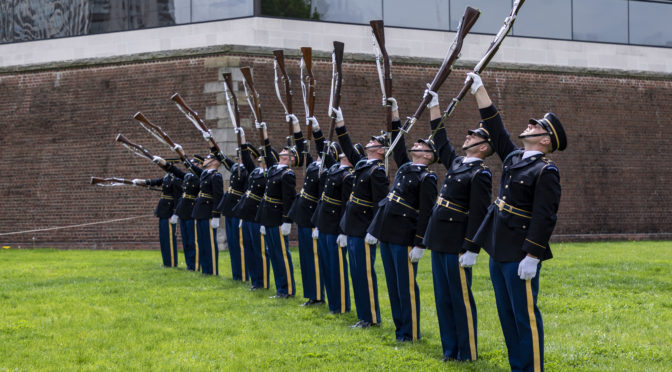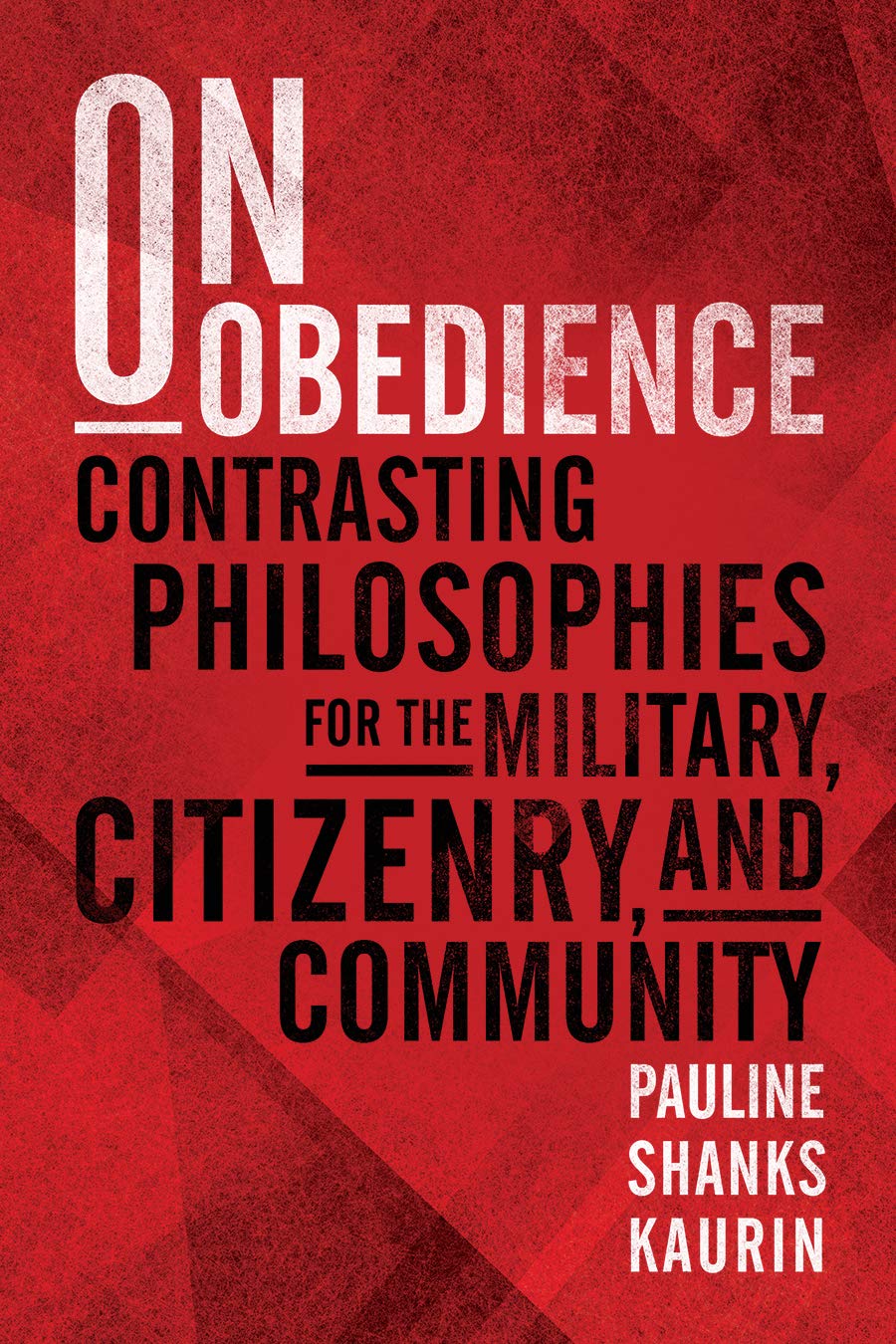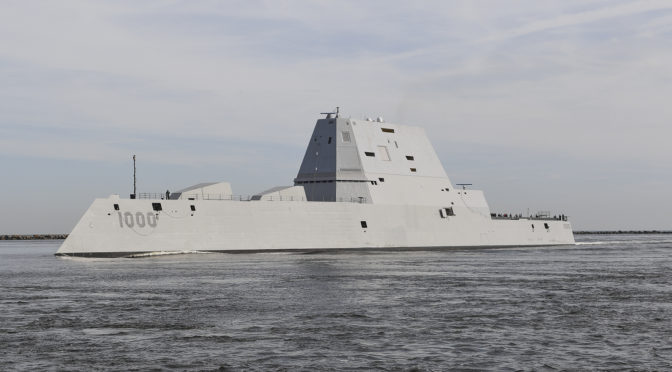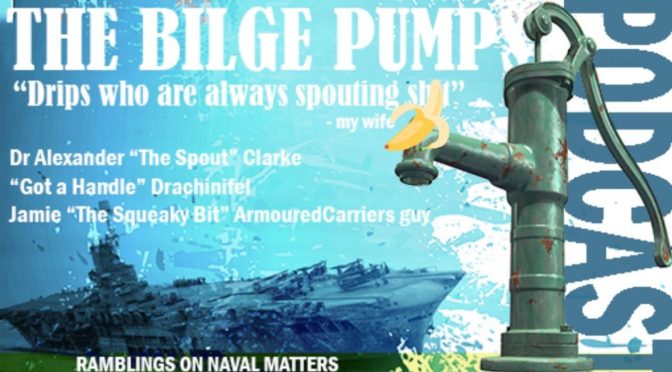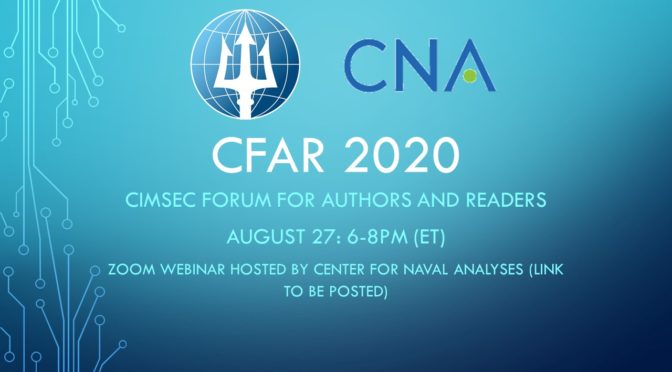By Commander Christopher Nelson, USN
Professor Pauline Shanks Kaurin, a professor in the College of Leadership and Ethics at the U.S. Naval War College and the Admiral James B. Stockdale Chair in Professional Military Ethics, joined me to discuss her new book, On Obedience: Contrasting Philosophies for the Military, Citizenry, and Community. It’s a great read and an incredibly timely book. We discuss Captain Crozier’s firing, if we should have an ethicist on the Navy staff, and just which philosophers she would bring back from the past to star on a podcast about ethics and philosophy.
I’d like to start with a personal question if you don’t mind. You’re a parent and a professor. Indeed, you mention your sons early in the book when framing the word “obedience” for readers. How does your training as an ethicist shape your decisions as a parent?
First, I tend to have perhaps a shorter trigger on certain things (especially lying or deception) because I think, teach, and write about ethics. My kids will tell you I take ethics way too seriously. Second, I also spend a ton of time with my kids talking about their decisions and why they are making the decisions they are. They know they have to make an argument if they want certain things (and they are quite good at it!) and that I will expect them to justify and have reasons for their actions. Third, because I focus on a communal and care approach to ethics, they know that I expect them to think about how what they do impacts other people. As teenagers, this is a tough one, but both my boys are quite empathetic and considerate (when they choose to be). Lastly, I value independence, especially of thought, which leads to some interesting discussions and negotiations about rules and standards.
So, any advice on raising ethical children? And where, if ever, does that advice have practical overlap with leading a platoon of soldiers or a division of Sailors? Or another way to ask it: Does the familial and the martial share ethical elements? Where do they diverge?
I think there are some similarities in that you want to develop capacities for moral deliberation, judgment and action, as well as practices like care, empathy, and moral imagination. For my children the stakes are different than for the military officers I engage with and they have more leeway to learn from their mistakes. This means that for the military there has to be more emphasis on practicing these things before one gets into a situation where they are necessary. Members of the military are also members of a profession which my kids are not, so that brings lots of specific norms, values, and obligations in addition to those which are part of their personal morality. And of course, my children are not yet fully morally and legally responsible in the way that members of the military (as adults) are.
You make an important distinction in your book between loyalty and obedience. What are they and how do they differ?
These are both largely social virtues that are rooted in relationships; in the case of obedience within specific communities of practice. Obedience is also largely a virtue about a specific action or series of actions that one is being asked to carry out. Loyalty is more about a long-term relationship or connection (which may involve some actions) where there is a shared commitment to certain ideas, projects, values, or ways of thinking. This is not necessary for obedience. I can obey the POTUS whether or not I agree with his political perspectives. As such while there is some overlap, it is not necessary. One can be loyal and be disobedient, as well as obedient and disloyal.
Let’s dig into the relief of Captain Brett Crozier a bit. Plenty of folks have already spilled ink with their opinions and choosing sides and voicing frustrations. But I want to step back for a second. So here’s the question: You get a phone call from the Chief of Naval Operations and it’s the day after the captain’s letter hits the press. The CNO asks you if you don’t mind coming to his office since he has…questions. So, he asks you: “Pauline, what ethical questions should I consider when thinking through this event?” What advice do you give him?
I would probably have him read my article on the subject before we talk!
For the CNO, the issues of the profession are important. What are his moral obligations to the Navy? To the Secretary of the Navy? To POTUS? To Crozier? To the sailors of the USS Theodore Roosevelt? What is the basis of these obligations? Is it about rules and policies? Is it about care? Is it about what is best for the most people? Is it about what it means to be a good CNO? What are the specific obligations that come with that office that others might not have? In particular, I would ask him to seriously think about whether preserving the reputation of the Navy is a moral obligation here and especially given the leadership challenges of the last few years, whether there are other moral obligations that are more important.
In addition, senior leaders also have to think about second, third, fourth, and fifth order implications of their decisions and actions for a variety of stakeholders. All of these effects will have ethical dimensions that need thinking through. I would hope we could talk through all of these things together, since being an ethical leader is not just about one’s own morality, but about the larger community of practice and its context (in this case, the military profession).
Should we have an ethicist on the Navy staff? On the Joint Staff? Frankly, I don’t know if we do. But don’t hospitals have ethicists? These are people – and the question of who gets a ventilator during the pandemic is pertinent – that help administrators and physicians make important policy decisions for their patients and their organization. Why not have the same?
In the military this question is complicated. We do not necessarily have persons trained in ethics as an academic discipline on senior leader staffs. We do have JAGs who weigh in on legal matters and chaplains who might provide moral advice on a personal and command level, but their training (as is appropriate) is generally more religious in nature.
The Navy does have academic experts like myself, my counterpart at the Naval Postgraduate School (NPS), and others trained in ethics as a discipline at the U.S. Naval Academy and other places like the Naval Leadership and Ethics Center (NLEC) and Senior Enlisted Academy here in Newport. Some have pointed out that there might be a need for a dedicated ethicist position. That said, my door is always open, as is that of my NPS colleague. We regularly write and speak on these issues and are always happy to engage.
I’d like to call this next question the “Hollywood Hypothetical.” Pauline gets stuck in a telephone booth with Bill (Keanu Reeves) and Ted (Alex Winter). Keanu says you have to go back in time and find three philosophers and bring them back to 1) start a military ethics podcast and 2) debate the firing of Captain Crozier for the first episode. Language barriers aside, who do you shove into that phonebooth? Why? And what’s the name of your kick-ass podcast?
Kaurin: Divas and Warriors: Let’s talk about military ethics!
I would definitely have Aristotle, David Hume, and Annette Baier (a contemporary philosopher who focuses on trust and care, but is also a Hume expert). That said, it would be fun to have Bill and Ted stay on to be the peanut gallery and offer comic relief.
Is disobedience often adjudicated and vindicated? What I don’t have a good feel for is all of the disobedient acts in U.S. military history, some investigated or written about, and then vindicated. Many may never reach the threshold for publication or they fade away in paper stacks or computer drives. Simply, and you use General Milley’s quote in your book, can we capture and should we talk about and publicize accounts where servicemembers practice “Professional Disobedience”?
I think in general disobedience is tacitly (through military practice and culture) and explicitly (in UCMJ, ideas like good order and discipline and the chain of command) discouraged for largely good reasons. In practice, particularly in combat situations, we find a much greater tolerance for something like Milley’s disciplined disobedience or the negotiation that I talk about in my book. These instances might not be what we think of as full, explicit disobedience (although occasionally that happens), but something less than obedience to the orders as given. I talk about some of these in the book, but military history is filled with people exercising professional judgment and discretion to do what they think is indicated in a given situation – often for specific reasons.
I do think we should talk more about some of these cases, if only to open the discussion and help people develop the capacity to make these kinds of moral judgments as members of a profession and as citizens. It’s complicated.
What can we learn from other militaries – past and present – on how they thought through building an obedient military culture? Are there any particular nations that for you, personally, make for a fascinating case study?
In the book I discuss how the Brits handle this through the idea of a “Reasonable Challenge” which provides a framework and process for making these kinds of judgments without undermining a general culture of obedience. Many historical warrior cultures also seem to have ways in which they might think about obedience in ways that are less bureaucratic than our contemporary militaries. Clearly a reasonable level of obedience is necessary, but exactly how much and how it manifests can vary quite a bit. Looking at history, art, literature, film, and culture can give us a view on other ways of doing things that are worth interrogating and considering.
You refer to the professor and writer Elizabeth Samet later in your book. You cite her book Willing Obedience as a book that does a good job of capturing how Americans – through the 18-19th century – discussed obedience versus autonomy. They explored this tension in fiction, memoirs, and other texts. Do you believe this is the best way to explore ethical tensions? How else can we explore these tensions?
I think that drawing on lots of different resources is important. My book and my work generally are inter-disciplinary and span historical time periods and cultures (including the future) for a reason. While philosophical texts and arguments are important to doing ethics, questions of ethics are ultimately questions about how to live, and how to think about and talk about how we live. It makes sense then, to pull from all the varieties of human experience to explore these questions. This approach also helps build empathy, critical and strategic thinking, as well as moral imagination; all of these are essential to being an ethical person.
To wrap up, what other books, films, podcasts, or poetry should people look into when they want to think about ethics in the military?
There are lots of great movies (and not just ‘war movies’) and elements of popular culture that are a good way to get into topics that then one might read about in a more intentional fashion. Michael Walzer’s Just and Unjust Wars is a classic in military ethics for a reason, but Tim O’Brien’s The Things They Carried, Nancy Sherman’s work on moral injury, Afterwar: Healing the Moral Wounds of Our Soldiers, and Shakespeare’s Henry also explore important issues in very different ways. Those who have served have reflected on their experiences, but it’s also important to read and engage the experiences of all impacted by violence and conflict for a variety of questions, concerns, and experiences. For me, it is less about the material you engage (I have my favorites), and more about the questions and mindset you bring to the material and how you reflect on it.
Pauline Shanks Kaurin holds a PhD in Philosophy from Temple University, specializing in military ethics, just war theory, and applied ethics. She is also Stockdale Chair and Professor of Professional Military Ethics at the U.S. Naval War College in the College of Leadership and Ethics. Recent publications include: “When Less is not More: Expanding the Combatant/Non-Combatant Distinction”; “With Fear and Trembling: A Qualified Defense of Non-Lethal Weapons” and Achilles Goes Asymmetrical: The Warrior, Military Ethics and Contemporary Warfare (Routledge 2014.) She was Featured Contributor for The Strategy Bridge and published in RealClearDefense, The Wavell Room, Newsweek, and Just Security. She lives in Newport, Rhode Island. The views here are her own and do not necessarily reflect those of the U.S. Navy or the U.S. Department of Defense.
Commander Christopher Nelson is the Deputy Senior Naval Intelligence Manager for East Asia in the Office of Naval Intelligence in Suitland, Maryland. He is a naval intelligence officer and graduate of the U.S. Naval War College and the Maritime Advanced Warfighting School in Newport, Rhode Island. The views here are his own and do not necessarily reflect those of the U.S. Navy or the U.S. Department of Defense.
Featured Image: Soldiers, with the U.S. Army Drill Team, 3d U.S. Infantry Regiment (The Old Guard), conduct a performance during the Meet Your Army event at Point State Park, Pittsburgh, Pa., May 4, 2019. (U.S. Army photo by Staff Sgt. Dalton Smith)

